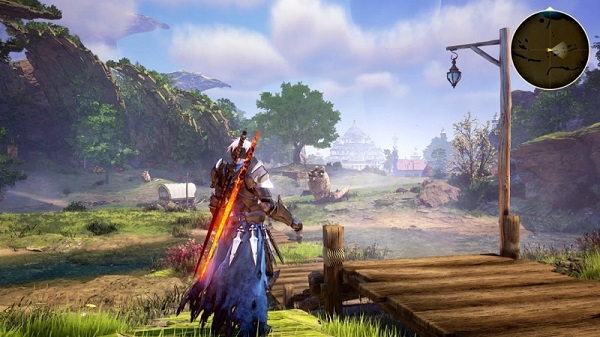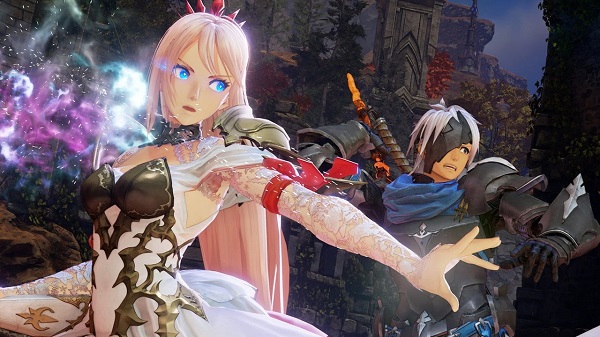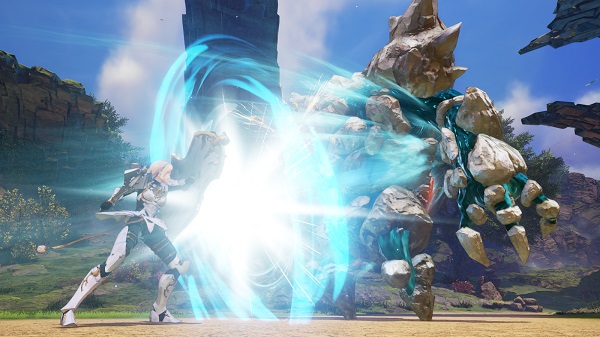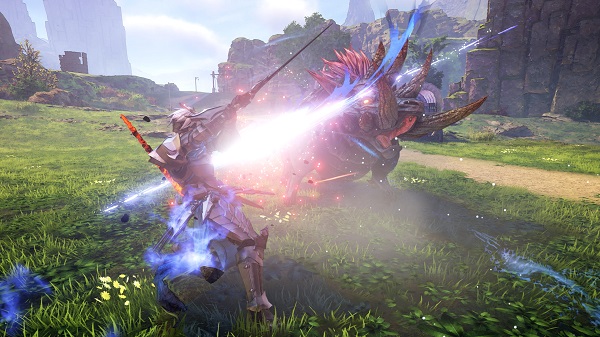Tales of Arise is the latest installment in the long-running Tales Japanese RPG series of Bandai Namco. If you understand what that means, you probably know whether or not you want to play the game. From the innovative Tales of Phantasia in 1995 to the refined Tales of Berseria in 2017, the Tales series is certainly the most consistent JRPG franchise from a major publisher. Tales of Arise, like its predecessors, follows a tried-and-true formula to give unadulterated JRPG comfort food. Tales of Arise is fantastic, exactly like its predecessors.

If you’ve ever played a Tales game, you’ll almost be able to sing along at this point: Tales of Arise features a challenging real-time combat system, a fascinating cast of characters with crisp dialogue, and a tale that starts simple but quickly devolves into some difficult moral territory. Tales of Arise is perhaps the first excellent JRPG of the current console generation, with appealing anime graphics and a wonderful soundtrack. Fans of the series will feel right at home, but even beginners should pick it up to discover what they’ve been missing out on all this time.
Gameplay
Tales of Arise puts you in the shoes of Alphen, an amnesiac swordsman who embarks on a globetrotting adventure with five other beautiful young misfits. If you’ve played a JRPG, you’re undoubtedly already aware of the game’s structure. You’ll assemble a party, travel from town to town, engage in a slew of low-stakes battles along the road, level up your abilities, upgrade your equipment, find a slew of side tasks, and endure a barrage of story cutscenes.

The real-time battle system in Tales of Arise sets it unique from most other JRPGs. You and three party members enter a specialized battle screen when you confront a group of enemies. Instead of taking turns dealing damage, you’ll sprint around the battlefield, chaining together regular and special attacks while avoiding opponent attacks. Cure Points, a resource that does not automatically regenerate between battles, are now related to your restorative healing Artes. This serves as both a carrot and a stick for further exploration. You don’t really want to run out of CP in the middle of a dungeon, but you also don’t want to stockpile them, especially since they can be used to unlock optional areas. It’s a clever compromise that provides Tales of Arise tactical and strategic depth.
While real-time fighting systems are a trademark of the Tales franchise, Tales of Arise adds a few twists. First and foremost, even on default settings, the game is extremely difficult. Because most attacks only deliver minor damage, the only way to defeat enemies is to stagger them and chain as many techniques as possible. Between regular attacks, specialty Artes, unique character powers, and devastating dual-character strikes, Tales of Arise provides plenty of ways to do so. Ordinary encounters aren’t too difficult once you get the feel of battle, but the game’s massive bosses are always a challenge.

In regards to Arise’s battle system, I’m undecided. Button-mashing won’t get you through even the most basic fights, unlike previous Tales games, which might make combat feel tiring after a while. But it also means that, despite the benefits, the battle never feels trivial. The amount of experience you gain from fighting the same enemy types over and over decreases as you level up. This means that leveling up before big enemies is nearly impossible, leaving you with no alternative but to play the game more effectively. While Tales of Arise is not a simple game to play, it is satisfying to see your party members and your own skills improve with time.
Aside from that, Tales of Arise has the standard JRPG activities. As you collect experience and level up, you’ll become stronger, and unlockable skill trees will allow you to further customize your powers. You’ll build new weapons and armor, cook meals to temporarily increase your stats, hunt down optional enemies to improve your healing powers, and solve easy puzzles to navigate the game’s large, explorable maps. Everything works, but if you were hoping for a substantial change to the Tales formula, you’ll be disappointed.

Story
The spacefaring Renans have subjugated the earthbound Dahnans for 300 years in Tales of Arise. You play as Alphen, a Dahnan slave who has lost his memory but is eager to fight his Renan oppressors with weaponry. He joins forces with a rogue Renan named Shionne, who has her own motivations for overthrowing Dahna’s five tyrant Lords. They meet a group of like-minded conspirators as they go from realm to realm, and they realize that the connection between Dahnans and Renans is not as black-and-white as they first thought.
Tales of Arise, like other Tales games, begins with a standard fantasy setup (“explore the world, kill the evil Lords”), but it doesn’t stop there. Defeating the Lords offers Alphen and Shionne a reason to travel around Arise, from the fire-flecked wastelands of Calaglia to the lush grasslands of Menancia. But it doesn’t take long for the two to understand that even defeating the Lords won’t be enough to undo three centuries of cultural damage. The backstories of Alphen and Shionne add to the confusion, leading to a three-dimensional story with some satisfying twists and turns.

Characters doubt themselves, overcome difficulties, fall in love, betray one another, hide their motivations, banter to develop camaraderie, and so on are all common story elements. The key party members, on the other hand, are charming enough to make these well-worn clichés feel new. Alphen and Shionne have natural chemistry, and they get along swimmingly with the bright-eyed magician Rinwell, the overeager martial artist Law, the maternal knight Kisara, and the distant healer Dohalim.
Visuals and Sound
In terms of graphics, Tales of Arise shows that anime-inspired games may have reached a threshold of diminishing returns. Tales of Arise doesn’t look horrible — in fact, it looks rather beautiful — but it doesn’t stand out from Tales of Berseria or other JRPGs from the previous console generation.

Although the animations are good and the level design is varied, the center cast appears to be surprisingly reserved for a Tales party. Their outfits are predominantly blues, whites, and grays, with rather traditional faces and hairstyles.
The soundtrack, however, is breathtaking. Motoi Sakuraba (Dark Souls, Mario Golf: Super Rush) composed the most memorable battle theme in Tales history, and the rest of the tracks sound similarly inventive. The voice casting is also fantastic, especially Alphen and Shionne, however, Bandai Namco has yet to unveil the English voice actors.

Verdict
Genre conventions aren’t rewritten in Tales of Arise, but they are not necessary. Like the previous games in the series, it’s a big adventure with a challenging battle system and a gripping story. If you’ve ever played a Tales game, you already know what you’re getting yourself into.
Even if you’ve never played a Tales game before, there’s enough to like in Arise. Even if the cutscenes can be a little long at times, the combat will keep you on your toes, and the characters will be with you long after you’ve turned off your console. You’ll have to wait and see how the PS5 and Xbox Series X can support a whole new genre of JRPG. Tales of Arise, on the other hand, is exactly what you need if you want a reminder of why we keep going back to this same formula after 25 years.




















